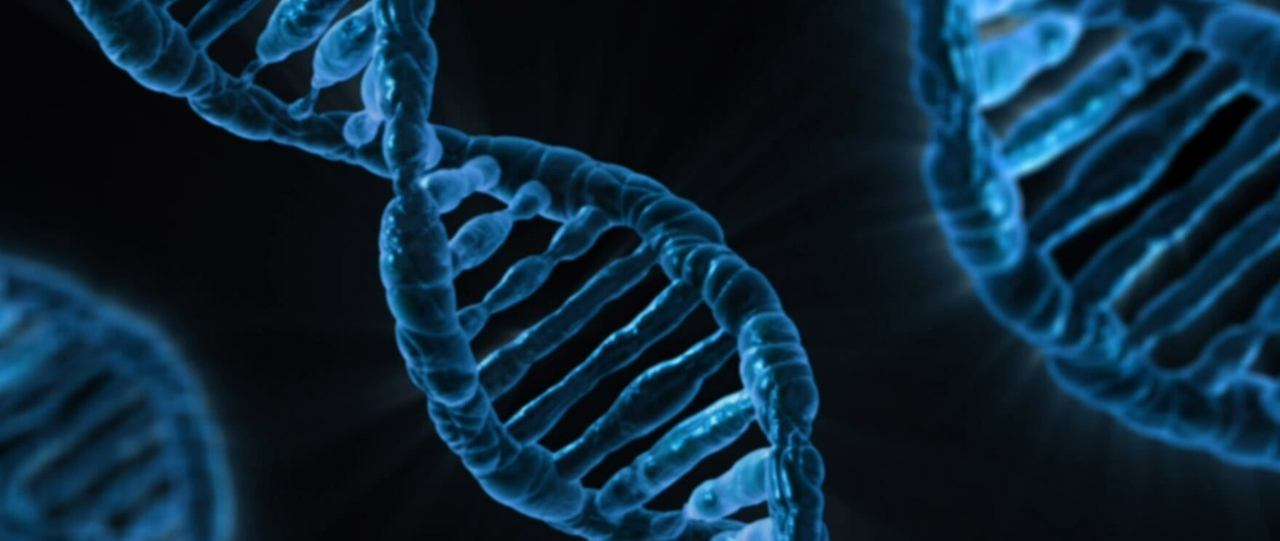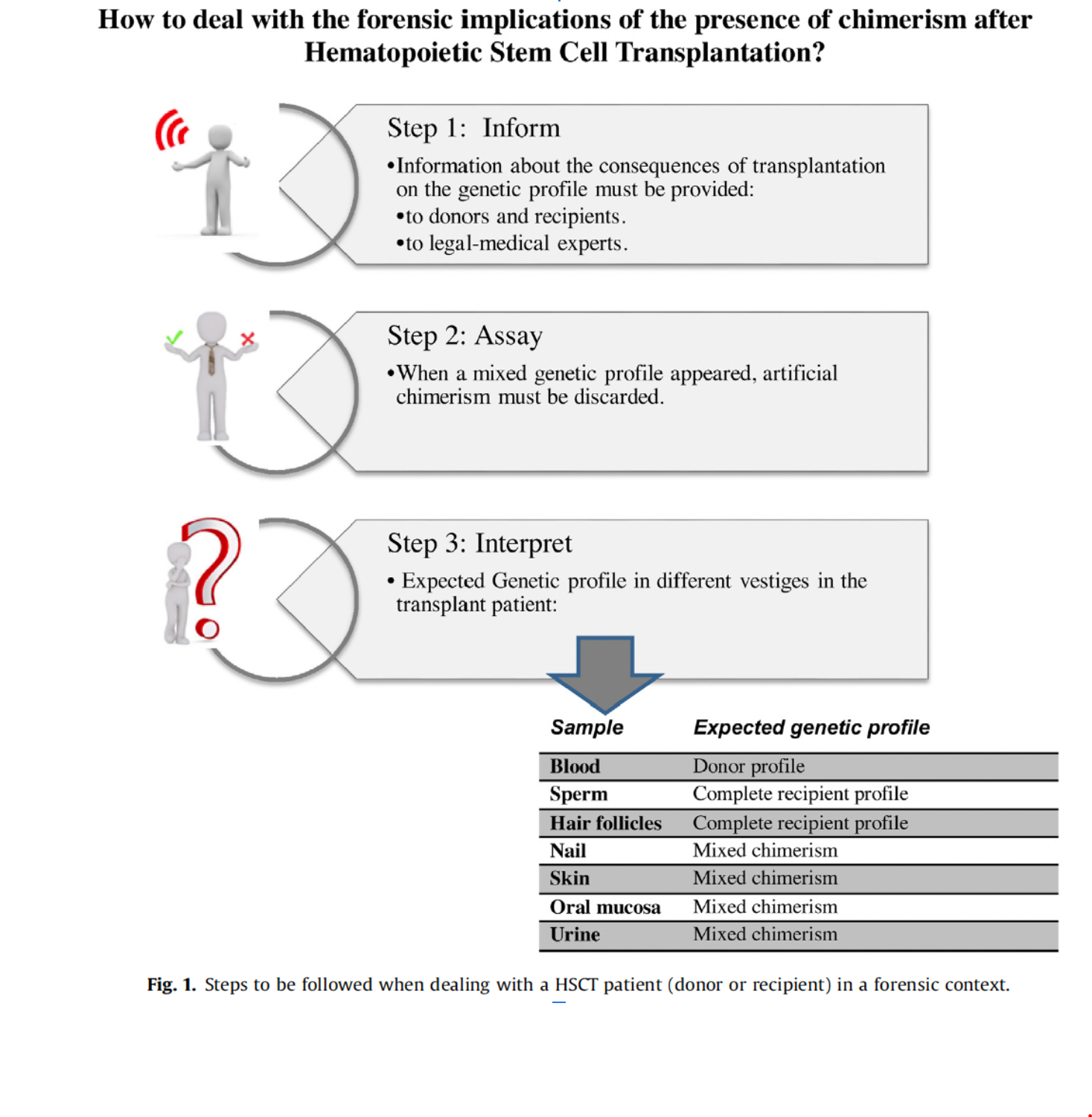
Artificial Chimerism and Its Effect on DNA-based Sex Determination in Forensics
Idil Gure (edited by Anindro Bhattacharya)
Posted on 13 Jun, 2023
Introduction
Forensic science is a discipline that allows investigators to use scientific methods in legal contexts. It has been an important aid in particular for identifying victims and offenders at crime scenes by building profiles using biological evidence. DNA is crucial for investigations for murder, sexual assault, or in mass disasters, and DNA profiling is the process by which an individual’s human profile can be determined (George et al., 2013). This is because DNA allows for the transfer of heritable traits. Methods that were used before DNA profiling included using classical markers such as red blood cell enzymes and blood type, which help distinguish the different kinds of blood (AB+ or O- for example). (George et al., 2013). However these methods are not very selective, blood types alone for example lack uniqueness and this makes it harder to find the individual making the methods for detection limited. DNA however is very discriminative which makes it reliable. Along with polymerase chain reactions (PCR), a technique used to make more copies of DNA, a small sample found at a crime scene can be duplicated to make more of the sample for further testing. One part of building the genetic profile of the individual is sex determination. Sex typing markers are found on the sex chromosomes in humans. DNA-based sex typing however does not come without some inaccurate results.
What is Chimerism and how does it affect analysis results?
Chimerism is the condition in which a person may possess both male and female specific factors needed for sex determination. The condition can be naturally occuring (tetragametic), take place during and after pregnancy (microchimerism), or through a bone marrow cell transplantation (artificial), which is the process of healthy stem cells, extracted from a donors bone marrow or blood to restore bone marrow that's not producing healthy blood cells. (Sanz-Piña et al., 2019), (Bone Marrow Transplant, 2023).
Figure 1: How to deal with the forensic implications of the presence of chimerism after Hematopoietic Stem Cell Transplanation (Sanz-Piña et al., 2019).
This article will specifically observe artificial chimerism effects on DNA sex determination with case study examples of how in a forensic context they influenced the investigation. First the main markers that used to determine the sex of the individual are amelogenin and the sex determining region (SRY) on the Y chromosome, the second sex-determining chromosome found in males. Amelogenin is a very common gene that differentiates the sexes, and it has to do with the difference in the length of the intron on the two AMEL genes (AMELX and AMELY) located on the X and Y chromosome respectively. (George et al., 2013) The female AMEL genes are both the same molecular weight unlike the male ones which makes sense due to the female sex chromosomes being homozygous. For the SRY method, it depends on the absence of it in the female so the presence of the SRY in an individual should help to differentiate between a female and male. These results from genetic profiles can be determined by using biological evidence such as blood, sperm, hair follicles, skin, urine, etc. (Sanz-Piña et al., 2019).
However these two methods are flawed in the sense that if an individual were to have both male and female characteristics in their genetic profile, it would be difficult to differentiate which profile belongs to who, especially if the donor is unknown
Solution: More Sensitive Measures
The solution to this problem of getting these inaccurate results lies within real life examples of how investigators identified the real sex of the victims who had artificial chimerism. 5 years before the death of a young girl and her brother, she had received bone marrow transplantation treatment for acute myelogenous leukemia (Seo et al., 2012). The donor's identity was unknown. The siblings had died in a house fire and their bodies had been burnt beyond immediate recognition so they required further identification measures to obtain a profile for the cadavers. Investigators obtained blood from the body's cardiac chambers. The girl that had received the bone marrow transplant had problems with identification. While examining the amelogenin in the blood appeared to show male characteristics while the nail and other tissues showed to have the recipient's female characteristics.
Other forms of biological evidence were collected from the nails and other tissues and they showed the true results of the recipient while the heart blood had results that were not consistent with the other forms of evidence. Similarly when a woman in November 2000 had reported that she may have been sexually assaulted, she too had a bone marrow transplant to treat leukemia (Pope et al., 2006). When investigators took evidence such as external vaginal fluids a mixture of different genetic profiles were found, which led them to take hair and blood samples. The victim's blood has shown a complete profile of the donor's blood, her brother, which was the reason why in the blood and hair samples there were many shared alleles (Pope et al., 2006). Therefore simply using methods such as amelogenin and SRY are not enough (Sanz-Piña et al., 2019).
In cases where the investigator is not aware of the patient's medical history (whether or not they received stem cell donation) they should make sure to use other forms of biological evidence that are not exclusive to a few, to validate the person's identity. Artificial chimerism has a potential impact on casework and on the crime and genetic profiles for later comparison.
Glossary
- Forensic Science: The scientific method and the sciences applied in a legal and judicial context (“What Is Forensic Science,” 2023)
- Blood Type: Determined through the presence or absence of antigens, which are components that can prompt an immune response. (Facts About Blood and Blood Types, 2023)
- Molecular weight: The sum of the masses of all the atoms in a molecule based on a scale in which their masses are (NCI Dictionary of Cancer Terms, 2011)
- DNA profiling: The process by which individuals are identified based on their genetic makeup. (“DNA Profiling”, 2019)
- Myelogenous Leukemia: Condition in which bone marrow produces too much white blood cells (Chronic Myelogenous Leukemia Treatment, 2023)
- Bone marrow transplantation: Stem cells are extracted from a donor's bone marrow or blood to replace the recipient's unhealthy blood cells. (Bone Marrow Transplant, 2023)
- Polymerase Chain Reaction: A technique used in the laboratory to quickly produce millions of copies of a specific segment of DNA. (Polymerase Chain Reaction(Pcr), 2023)
- Y chromosome: One of the two sex chromosomes, the other one being the X chromosome. Present in males who have one along with one X chromosome. (Y Chromosome, 2022)
References:
Bone Marrow Transplant. (2023). Mayo Clinic ; Mayo Foundation for Medical Education and Research (MFMER). https://www.mayoclinic.org/tests-procedures/bone-marrow-transplant/about/pac-20384854
Casacuberta-Serra, S., Martorell, L., & Barquinero, J. (2014). Hematopoietic chimerisms: Friends or foes? Advances in Regenerative Biology, 1(1), 24429. https://doi.org/10.3402/arb.v1.24429
Chronic myelogenous leukemia treatment. (2023). National Cancer Institute . https://www.cancer.gov/types/leukemia/patient/cml-treatment-pdq
DNA profiling: How is it used in criminal justice? (2019). Maryville Online. https://online.maryville.edu/blog/how-is-dna-profiling-used-to-solve-crimes/
Facts About Blood and Blood Types. (2023). American Red Cross Blood Services. https://www.redcrossblood.org/donate-blood/blood-types.html
George, R., Donald, P. M., Nagraj, S. K., Idiculla, J. J., & Hj Ismail, R. (2013). The impact of chimerism in DNA-based forensic sex determination analysis. The Malaysian Journal of Medical Sciences: MJMS, 20(1), 76–80. https://www.ncbi.nlm.nih.gov/pmc/articles/PMC3684380/
NCI Dictionary of Cancer Terms. (2011). National Cancer Institute . https://www.cancer.gov/publications/dictionaries/cancer-terms/def/molecular-weight
Polymerase chain reaction(Pcr). (2023). Genome.Gov. https://www.genome.gov/genetics-glossary/Polymerase-Chain-Reaction
Pope, S., Chapman, H., & Lambert, J. (2006). The effect of bone marrow transplants on dna profiles; a case example. Science & Justice, 46(4), 231–237. https://doi.org/10.1016/S1355-0306(06)71603-3
Sanz-Piña, E., Santurtún, A., & Zarrabeitia, M. T. (2019). Forensic implications of the presence of chimerism after hematopoietic stem cell transplantation. Forensic Science International, 302, 109862. https://doi.org/10.1016/j.forsciint.2019.06.020
Seo, Y., Uchiyama, D., Kuroki, K., & Kishida, T. (2012). STR and mitochondrial DNA SNP typing of a bone marrow transplant recipient after death in a fire. Legal Medicine (Tokyo, Japan), 14(6), 331–335. https://doi.org/10.1016/j.legalmed.2012.06.001
What is Forensic Science. (2023). Canadian Society of Forensic Science. https://www.csfs.ca/student-zone/student-zone/
Y chromosome. (2022). Medlineplus Genetics. https://medlineplus.gov/genetics/chromosome/y/
